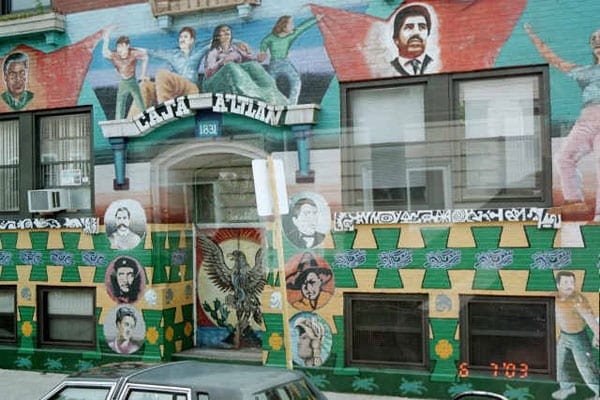
January 28, 2019; High Country News
While today’s Latinx community is highly organized around the defense of immigrant rights, this was not always the case, explains Gustavo Arellano in High Country News. Arellano, a prominent Latinx journalist who for over a decade penned the irreverent, award-winning “Ask a Mexican” column in the Orange County Weekly (and was editor of that paper for six years)—notes that the Latinx movement had to be carefully constructed.
This should not be surprising. After all, the Latinx community in the US comes from twenty different Spanish-speaking countries, with many cultural differences among them. But even among immigrants from the same country, stark divisions could be found. As Arellano explains, “Almost from the end of the 1848 Mexican-American War, many Mexicans who remained in the US tried to align themselves with Anglos in order to survive. They married their daughters to white settlers, and minted new identities—as Tejanos, Californios, Hispanos—that emphasized the European side of their ancestry at the expense of their Indigenous side.”
Arellano adds that The League of United Latin American Citizens, which claims to be the oldest Latinx organization in the US, “explicitly barred non-citizens from joining when it was founded in 1927.”
The Chicano movement of the late 1960s began to change this. Chicano movement leaders, Arellano explains, “felt that the assimilation strategy of the civil rights movement during the 1950s had done little to improve their lives. They forged a new label—‘Chicano’—to root them both in the US and Mexico.”
Of course, the assimilation strategy had always been of dubious effectiveness. In the 1930s, Arellano notes that the Hoover administration forced over a million Mexicans, some of whom were US citizens, to return to Mexico, putting them on trains or otherwise deporting them. But it took a social movement to create a decisive shift in sentiment in the Latinx community. Even after the emergence of the Chicano movement, however, Arellano notes that support for immigrant rights within the Latinx community was far from universal. Arellano explains:
Sign up for our free newsletters
Subscribe to NPQ's newsletters to have our top stories delivered directly to your inbox.
By signing up, you agree to our privacy policy and terms of use, and to receive messages from NPQ and our partners.
For years, many of these groups, created at the height of the 1960s civil rights movement to help Chicanos—American citizens of Mexican descent whose families have deep roots in the United States—ignored and sometimes even actively opposed more recent immigrants from Latin America.
Even César Chávez, who founded the United Farm Workers, Arellano explains, had a hostile response to migrant laborers, regarding them “as perpetual threats to his unionizing efforts.”
These attitudes persist among some Latinxs today. “Colonization is alive and well among us,” notes SouthWest Organizing Project (SWOP) executive director George Luján. Education, Luján contends, is crucial to counter these tendencies. “One particularly effective tool,” writes Arellano, “has been 500 Años del Pueblo Chicano/500 Years of Chicano History, a book edited by legendary Chicana educator Elizabeth ‘Betita’ Martinez, which tells the saga of Mexican-Americans in the United States through archival photos and explanatory captions.” According to Arellano, “SWOP has sold 33,000 copies of 500 Años, and also turned it into a video and coloring book.”
“You start with a connection first,” says Luján. “A shared value, then shared problems. History. Or chile. You start talking about chile—everyone can relate to that. Then you can talk about troubles … you talk it out, and you make connections. You find when to push or stand back. It’s work—it’s not a lecture.”
David Adame, president of Chicanos por la Causa (Chicanos for the Cause, or CPLC) “calls the rapprochement between Chicanos and immigrants ‘el nuevo movimiento’—The New Movement,” Arellano explains. Arellano notes that CPLC is a giant nonprofit—operating in Arizona, New Mexico and Nevada—with $75.7 million in revenues, $72.4 million in expenses and $53.6 million in net assets. Today, CPLC has heavily mobilized to support immigrant rights, but it was not always that way. In the early days, says Danny Ortega, a past board member, the struggle “was nothing about immigration. In some ways, we forgot that our own family members were immigrants.”
Sometimes organizing feeds off the negative energy of anti-Latinx racism and hostility. CPLC, based in Arizona, has been on the front lines. For example, Arellano writes, “In 2006, voters passed Proposition 300, which forced undocumented college students to pay out-of-state tuition; in response, CPLC created the American Dream fund, which raised over $5 million for affected undergrads.” For his part, Luján notes, “Trump is a great organizer in the [Latinx] community…a shared enemy is great. We all get a new awakening.”—Steve Dubb











